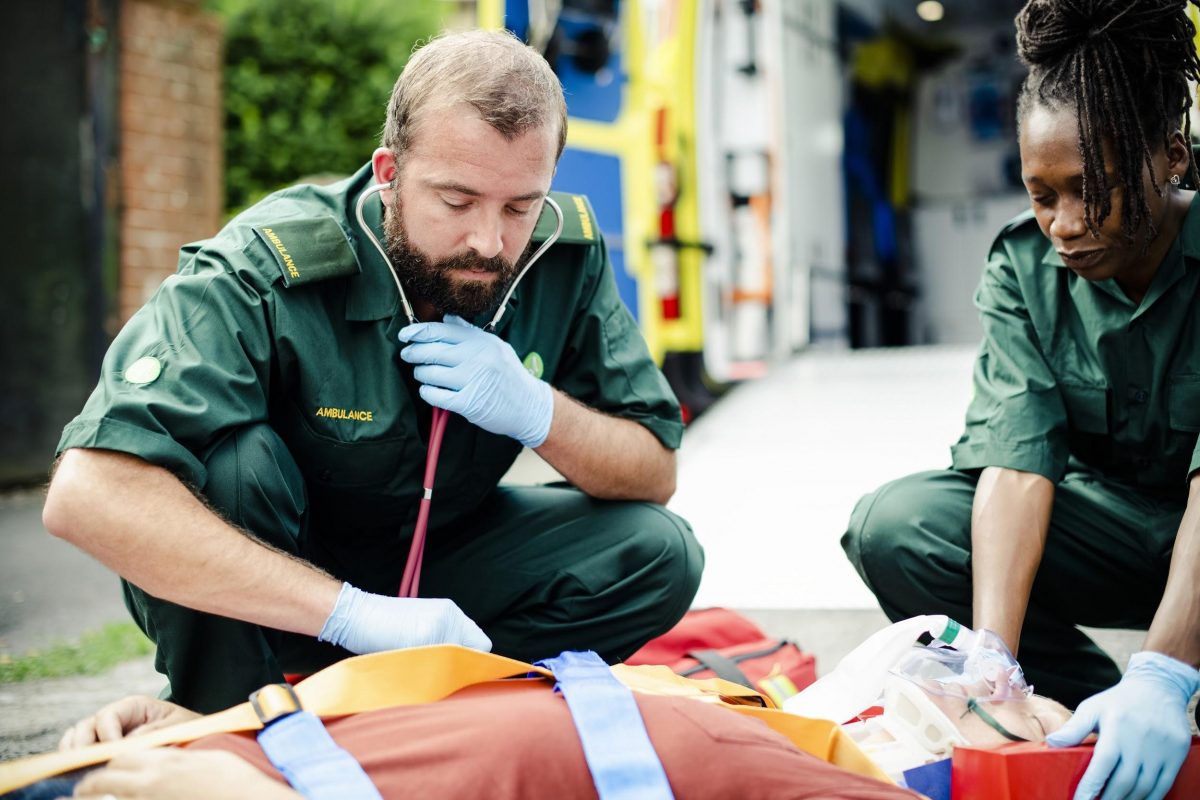Know the differences between OFAs and EMRs to ensure your site is outfitted with proper emergency care.
All worksites are unique and possess their own unique set of challenges and risks. Because of this, it is important to know the different training criteria for each level of first aid responder so that you can choose the best fit for your site.
Put simply, EMR certified first aid attendants have more in-depth knowledge about complex medical emergencies than OFA Level 3 attendants. An OFA attendant usually works as the only trained medical responder on the worksite, while an EMR tends to work with other trained medical staff with professional pre-hospital equipment.
While advanced skills are always a significant benefit, your site may not require an EMR and an OFA level 3 attendant might be the better fit. To better understand the differences between these two certifications, an overview of both OFA level 3 attendants and EMR attendants are discussed below.
OFA Level 3
Depending on the number of workers, distance to medical aid, and industry hazard rating there are three levels of first aid certification to fit the unique needs of your workplace. They are as follows:
- OFA Level 1 Basic level first aid training and certification
- OFA Level 2 Intermediate level first aid training and certification
- OFA Level 3 Advanced level of first aid training and certification
To effectively determine the level of first aid needed on your workplace, refer to Section 3.16 and Schedule 3-A of the Occupational Health and Safety Regulation. This schedule states that a worksite needs an OFA Level 3 attendant when:
- It is located in remote areas that are more than 20 minutes from medical aid
- It has a large workforce (from 11 up to 200 workers per shift)
- The nature and extent of the hazards in the workplace is deemed high-risk
OFA level 3 attendants receive 3-year certification from WorkSafe BC. They learn advanced maneuvers, techniques, and medical procedures for seriously injured patients during critical emergencies. OFA level 3 attendants are trained to treat complex injuries and rapidly mobilize patients in high-stress situations.
Usually, OFA level 3 attendants work alone as the only trained first aid attendant on a job site or work with untrained helpers. They are competent in the following areas:
- Medical Emergencies Response:
- Head-to-toe examination
- Critical incident stress
- Immobilization
- Airway Management:
- Operate oxygen therapy equipment and insert oral airways
- Manage oxygen therapy equipment
- Manage Oral Airways
- Common Injuries Management:
- Skin and soft tissue anatomy and function
- Management of soft tissue injuries
- Principles of burn management
- Ligament and tendon injuries
- Head and brain injuries
- Neck and spinal injuries
- General principles of management for fractures and dislocations
- Circulatory Emergencies Management
- Manage circulatory critical interventions
- Emergency Transportation
- Patient positioning
- Patient packaging for rapid transport
EMR
EMRs are professional emergency medical practitioners recognized by the Paramedic Association of Canada. Some of their qualifications are outlined below:
- Must be certified in Standard First Aid with CPR Level C
- Experts in providing essential life support and pre-hospital care at the scene or during transport
- Receive fundamental medical training to respond to a wide range of trauma and medical emergencies
- Trained to work in fast paced and high stress situations
- Perform appropriate patient assessments, interventions, and on-going care, including the transportation of a patient to a healthcare facility
Like OFA level 3 attendants, EMRs receive 3-year certification, but their certification is provided from the Canadian Red Cross. EMR’s predominantly work in a team environment with professional pre-hospital care equipment and providers. They have more advanced skills and training than OFA level 3 attendants, with additional training in anatomy and physiology, in-depth patient assessment, and advanced medical emergency management. They are competent in the following areas:
- Circulation emergencies
- Respiratory emergencies (Asthma, COPD, bronchitis, emphysema, pneumonia, CH)
- Airway & ventilation emergencies
- Shock & bleeding
- Head & spine injuries
- Chest, abdominal, and pelvic Injuries
- Fractures & sprains
- Soft tissue injuries
- Sudden medical emergencies (fainting, seizures, or diabetes)
- Special populations
- Environmental emergencies (heat and cold emergencies)
- Pharmacology: for treating most common illness and poisoning
- Childbirth and delivery
- Crisis intervention
- Emergency transportation
Ensuring your workplace is outfitted with the correct level of emergency care is important. In unexpected situations where minutes matter, it’s crucial to have the proper medical team on hand to respond to any emergency. Not all first aid responders are trained for all emergencies, so take a moment to assess your worksite and select a first aid responder that is right for your unique operation.

